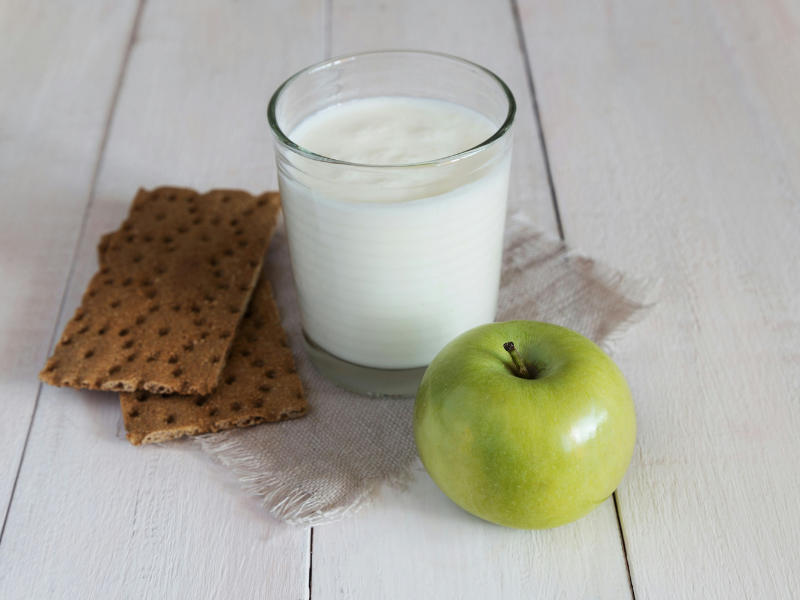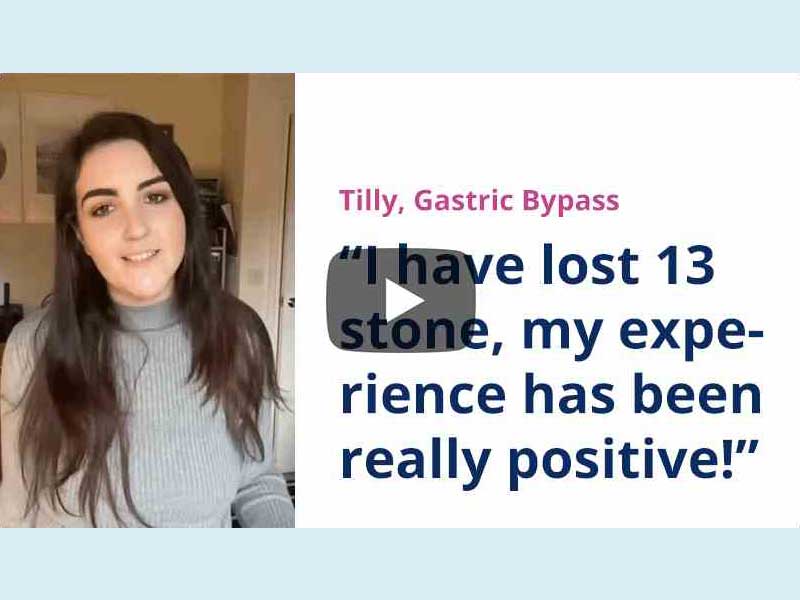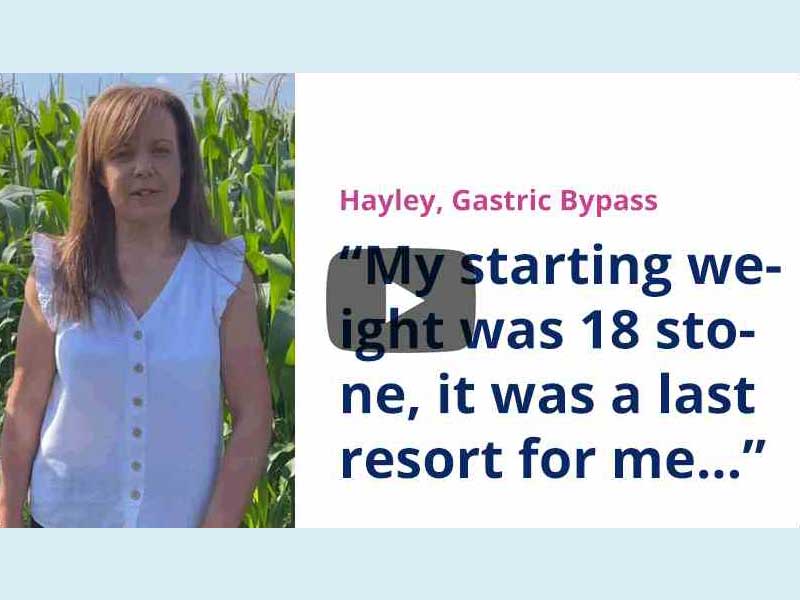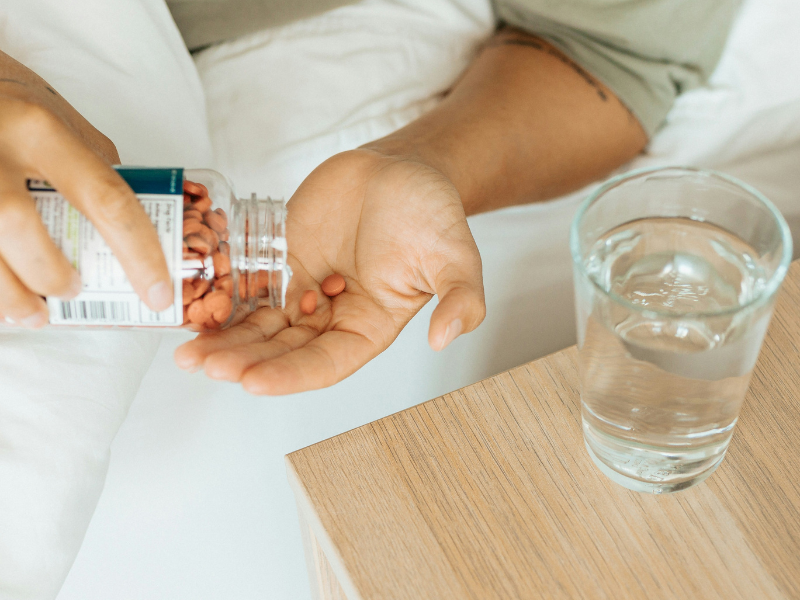What is LRD & what are some LRD friendly meals

Reviewed By Bariatric Nutritionist Guna Bilande
Last updated 01/01/2000
What is LRD & what are some LRD friendly meals
 |
Reviewed By Bariatric Nutritionist Guna Bilande Last updated 01/01/01 |
If you’ve been recommended to undergo a liver reduction diet (LRD) ahead of your surgery this article will shed some light on what it involves

The aim of the diet is to reduce the glycogen stores in your body, especially those in your liver causing the liver to ‘shrink’ in size, making it easier for the surgeon to see what they are doing during your surgery.
During laparoscopic or ‘keyhole’ surgery, the liver has to be lifted out of the way to access the stomach lying beneath it.
If the liver is heavy, fatty and immobile, it is harder for the surgeon to see and operate on the stomach underneath.
To reduce the glycogen stores in the liver, it is necessary to follow a diet that is low in calories, low in carbohydrate, low in fat and high in protein. Carbohydrates are sugars and starches. This includes bread, rice, pasta and potatoes.
It’s possible that you’ll lose a significant amount of weight during these two weeks. However, a lot of the weight you’ll lose will be from water as the body uses up your glycogen stores. This is because glycogen holds onto water, so when glycogen is burned for energy it also releases the water.
For the diet to be successful, it is important to stick to this diet for the full two weeks. There may be a temptation to have a special/larger meal prior to surgery. However, if you do this, it will reverse the liver reducing effects of the diet.
 |
Get our best content in your inbox every week
|

in your inbox every week
What should I eat on a liver-reducing diet?
There are three different plans available for a successful liver-reducing diet:
1. Food plan - normal foods using carefully measured portions of carbohydrates.
2. Milk plan - using only semi-skimmed, soya or almond milk and multivitamin tablets.
3. Meal replacement shake plan - following the manufacturers specific instructions i.e. Slimfast etc.
This low-calorie diet is essential to make your surgery safer. Patients undergoing bariatric surgery tend to have very enlarged livers. If the liver is too big it will be very difficult for the surgeon to perform the operation safely - in some cases resulting in the surgeon cancelling or postponing your operation.
For those following the milk plan
If you choose to opt for the milk plan, we recommend the following allowances:
4 pints of semi-skimmed milk
2 pints (1 litre) of other fluid.
No added sugar or diet variety soft drinks
Tea or coffee using milk from allowance (you can use a sweetener but must not use sugar)
Water
Flavoured water (providing it doesn’t contain sugar – check the label)
1 multivitamin and mineral tablet (e.g. Sanatogen A-Z Complete or Centrum Advance)
1 salty drink e.g. stock cube, Bovril (1 teaspoon in hot water), marmite (1 teaspoon hot water)
Allowed extras:
Sugar free jelly- 1 sachet a day
Sugar free chewing gum- maximum 3 pieces a day
While following the pre-op milk diet, it is important to have a routine for taking your milk. Try to divide it into glasses taken regularly throughout the day. For example: 8am, 12 noon, 3pm, 6pm, 9pm.
You may experience headaches or feel “light-headed” after starting the diet; this is quite usual and will pass in the first few days. Constipation can become a problem when following this diet because it contains very little fibre so you may need to take 1-2 sachets of Fybogel each day in order to prevent this.
If you have diabetes and take insulin injections or gliclazide (tablets) please contact your GP before commencing the pre-op diet. This diet is low in carbohydrates and will affect diabetes control, making your blood sugars go lower than normal. It is likely you will need to adjust your insulin doses.
For those following the food plan
This diet is designed to give you approximately 100g of carbohydrates per day. It is low in fat (although how low will depend on the foods you choose) and moderate in protein.
The energy value of the diet is between 800-1000 kcal per day. It is very important to measure your portions accurately or you may end up eating too much and the diet will not work.
Per day you should take three meals and choose from the options listed below.
Breakfast (15g carbohydrate each)
Choose one of the following options (use milk from your additional daily allowance listed further down):
· 5 dessert spoons of bran flakes or fruit & fibre or cornflakes
· 1 shredded wheat or 1½ Weetabix
· 6 dessert spoons of All Bran
· 5 dessert spoons of Rice Krispies
· 25g of rolled oats porridge
· 1 medium slice toast with scraping of low fat spread + 2 eggs (boiled or scrambled)
Lunch (15-20g carbohydrate each)
Choose one of the following options:
· 1 slice medium sliced bread/toast
· 2 crispbreads
· ½ bagel
· ½ pitta bread
Plus plenty of vegetables/salad (low fat dressing).
With one of the following protein options:
· 2 eggs (cooked without fat)
· 60g /2oz cheese (2 x matchbox size)
· 8 thin packet slices of ham, chicken or turkey
· 1 small chicken breast without skin
· 4 rashers of grilled back bacon
· 100g/4oz (small portion) meat
· 2 grilled low-fat or Quorn® sausages
· 100g/4oz tinned fish
Evening meal (20g carbohydrate each)
Choose one of the following options:
· 1 average size old potato (approx 125g boiled/mashed)
· 4 egg-sized new potatoes with skin
· 2 small roast potatoes
· 125g yam – boiled
· 1 small green banana – boiled
· 3 dessert spoons of cooked rice (any variety)
· 3 dessert spoons of cooked pasta (any variety)
· 40 strands of spaghetti (count when raw!)
With one of the following protein options:
· 2 eggs
· 60g/2oz cheese (2 x matchbox size)
· 8 thin packet slices of ham, chicken or turkey
· 1 small chicken breast without skin
· 4 rashers grilled back bacon
· 100g/4oz (small portion) meat
· 100g/4oz tinned fish
· 100g/4oz tofu or Quorn®
Plus plenty of vegetables/salad (low fat dressing).
Additional allowances throughout the day:
· 1/3 pint/200ml milk for drinks/cereal (10g carbohydrate)
· 2 portions of fruit or 1 x 150ml fruit juice and 1 x portion fruit (see fruit portions list below for details)
· One small pot (125g) low fat, low-sugar yoghurt per day (diet or ‘lite’ varieties) or 1 small pot low-fat natural yoghurt (about 10g carbohydrate)
Plus unlimited water, tea, coffee, low-calorie squash, low-calorie fizzy drinks. Please note that alcohol is NOT allowed while you are following any of the 2-week pre-op diet options.
How much is a portion of fruit?
· 1 piece of a medium fruit (e.g. apple, orange)
· 1 slice of very large fruit (e.g. pineapple, melon)
· 2 pieces of small fruit (e.g. satsuma, plum, kiwi)
· 3 dates
· 1/3 large can of fruit in juice (drained)
· 3 heaped dessert spoons of fresh fruit salad
· 3 dessert spoons stewed fruit without sugar
· 1 dessert spoon dried fruit
· 3 dried apricots
· 1 glass (150ml) fruit juice (maximum one per day!)
You should aim to eat mostly green salad and vegetables as these are the lowest in carbohydrates. Vegetables such as peas, sweet corn and parsnips are higher in carbohydrates and should be avoided if possible.
Try to use cooking methods that do not add fat to your foods such as baking, grilling or boiling. You can try using the 1kcal spray oils instead of pouring oil. It is also okay to use artificial sweeteners in place of sugar.
Any of the following spices/condiments can be used to add flavour: salt, pepper, fresh or dried herbs, spices, mustard, curry powder, lemon/lime juice, vinegar, fish sauce, soy sauce, Worcestershire sauce, stock cubes, vanilla and other essences.
It is important not to eat less than the specified portions of carbohydrates as this can make you feel unwell. Other foods on the menu will provide you with protein and small amounts of fat. The inclusion of these foods means that it should not be necessary for you to take any vitamin or mineral supplement.
What should I eat on a liver-reducing diet?
There are three different plans available for a successful liver-reducing diet:
1. Food plan - normal foods using carefully measured portions of carbohydrates.
2. Milk plan - using only semi-skimmed, soya or almond milk and multivitamin tablets.
3. Meal replacement shake plan - following the manufacturers specific instructions i.e. Slimfast etc.
This low-calorie diet is essential to make your surgery safer. Patients undergoing bariatric surgery tend to have very enlarged livers. If the liver is too big it will be very difficult for the surgeon to perform the operation safely - in some cases resulting in the surgeon cancelling or postponing your operation.
For those following the milk plan
If you choose to opt for the milk plan, we recommend the following allowances:
4 pints of semi-skimmed milk
2 pints (1 litre) of other fluid.
No added sugar or diet variety soft drinks
Tea or coffee using milk from allowance (you can use a sweetener but must not use sugar)
Water
Flavoured water (providing it doesn’t contain sugar – check the label)
1 multivitamin and mineral tablet (e.g. Sanatogen A-Z Complete or Centrum Advance)
1 salty drink e.g. stock cube, Bovril (1 teaspoon in hot water), marmite (1 teaspoon hot water)
Allowed extras:
Sugar free jelly- 1 sachet a day
Sugar free chewing gum- maximum 3 pieces a day
While following the pre-op milk diet, it is important to have a routine for taking your milk. Try to divide it into glasses taken regularly throughout the day. For example: 8am, 12 noon, 3pm, 6pm, 9pm.
You may experience headaches or feel “light-headed” after starting the diet; this is quite usual and will pass in the first few days. Constipation can become a problem when following this diet because it contains very little fibre so you may need to take 1-2 sachets of Fybogel each day in order to prevent this.
If you have diabetes and take insulin injections or gliclazide (tablets) please contact your GP before commencing the pre-op diet. This diet is low in carbohydrates and will affect diabetes control, making your blood sugars go lower than normal. It is likely you will need to adjust your insulin doses.
For those following the food plan
This diet is designed to give you approximately 100g of carbohydrates per day. It is low in fat (although how low will depend on the foods you choose) and moderate in protein.
The energy value of the diet is between 800-1000 kcal per day. It is very important to measure your portions accurately or you may end up eating too much and the diet will not work.
Per day you should take three meals and choose from the options listed below.
Breakfast (15g carbohydrate each)
Choose one of the following options (use milk from your additional daily allowance listed further down):
· 5 dessert spoons of bran flakes or fruit & fibre or cornflakes
· 1 shredded wheat or 1½ Weetabix
· 6 dessert spoons of All Bran
· 5 dessert spoons of Rice Krispies
· 25g of rolled oats porridge
· 1 medium slice toast with scraping of low fat spread + 2 eggs (boiled or scrambled)
Lunch (15-20g carbohydrate each)
Choose one of the following options:
· 1 slice medium sliced bread/toast
· 2 crispbreads
· ½ bagel
· ½ pitta bread
Plus plenty of vegetables/salad (low fat dressing).
With one of the following protein options:
· 2 eggs (cooked without fat)
· 60g /2oz cheese (2 x matchbox size)
· 8 thin packet slices of ham, chicken or turkey
· 1 small chicken breast without skin
· 4 rashers of grilled back bacon
· 100g/4oz (small portion) meat
· 2 grilled low-fat or Quorn® sausages
· 100g/4oz tinned fish
Evening meal (20g carbohydrate each)
Choose one of the following options:
· 1 average size old potato (approx 125g boiled/mashed)
· 4 egg-sized new potatoes with skin
· 2 small roast potatoes
· 125g yam – boiled
· 1 small green banana – boiled
· 3 dessert spoons of cooked rice (any variety)
· 3 dessert spoons of cooked pasta (any variety)
· 40 strands of spaghetti (count when raw!)
With one of the following protein options:
· 2 eggs
· 60g/2oz cheese (2 x matchbox size)
· 8 thin packet slices of ham, chicken or turkey
· 1 small chicken breast without skin
· 4 rashers grilled back bacon
· 100g/4oz (small portion) meat
· 100g/4oz tinned fish
· 100g/4oz tofu or Quorn®
Plus plenty of vegetables/salad (low fat dressing).
Additional allowances throughout the day:
· 1/3 pint/200ml milk for drinks/cereal (10g carbohydrate)
· 2 portions of fruit or 1 x 150ml fruit juice and 1 x portion fruit (see fruit portions list below for details)
· One small pot (125g) low fat, low-sugar yoghurt per day (diet or ‘lite’ varieties) or 1 small pot low-fat natural yoghurt (about 10g carbohydrate)
Plus unlimited water, tea, coffee, low-calorie squash, low-calorie fizzy drinks. Please note that alcohol is NOT allowed while you are following any of the 2-week pre-op diet options.
How much is a portion of fruit?
· 1 piece of a medium fruit (e.g. apple, orange)
· 1 slice of very large fruit (e.g. pineapple, melon)
· 2 pieces of small fruit (e.g. satsuma, plum, kiwi)
· 3 dates
· 1/3 large can of fruit in juice (drained)
· 3 heaped dessert spoons of fresh fruit salad
· 3 dessert spoons stewed fruit without sugar
· 1 dessert spoon dried fruit
· 3 dried apricots
· 1 glass (150ml) fruit juice (maximum one per day!)
You should aim to eat mostly green salad and vegetables as these are the lowest in carbohydrates. Vegetables such as peas, sweet corn and parsnips are higher in carbohydrates and should be avoided if possible.
Try to use cooking methods that do not add fat to your foods such as baking, grilling or boiling. You can try using the 1kcal spray oils instead of pouring oil. It is also okay to use artificial sweeteners in place of sugar.
Any of the following spices/condiments can be used to add flavour: salt, pepper, fresh or dried herbs, spices, mustard, curry powder, lemon/lime juice, vinegar, fish sauce, soy sauce, Worcestershire sauce, stock cubes, vanilla and other essences.
It is important not to eat less than the specified portions of carbohydrates as this can make you feel unwell. Other foods on the menu will provide you with protein and small amounts of fat. The inclusion of these foods means that it should not be necessary for you to take any vitamin or mineral supplement.
Considering weight loss surgery this year? Find out if you’re eligible and start your journey to a healthier you. |
Considering weight loss surgery this year? Find out if you’re eligible and start your journey to a healthier you.
How will you feel while you're on this diet?
As your body responds to the diet it releases ketones, which are made when the body breaks down fat for energy. These are released in the breath, urine and sweat – sometimes causing odour. You may also experience other symptoms such as thirst, and a slightly metallic taste in the mouth.
In addition, you may also find that your appetite is suppressed after the first 3 - 4 days, meaning that you feel much less hungry than you would have expected. Some people report feeling a little light-headed in the first few days. Just make sure you are sticking to the plan and drinking plenty – this will pass.
Protein is priority
Your pre-op and post-op bariatric diet will focus on protein, which is needed by your body to function properly, improve wound healing, maintain muscle tissue and avoid unnecessary hair loss.
Protein, unlike fat and carbohydrates, is not stored by the body and must be consumed in sufficient quantities every day. Protein will be the top diet priority during recovery and for the rest of your life following weight loss surgery. In general, it's recommended that 10–35% of your daily calories come from protein.
Your sex, BMI, and age are all factors that determine your daily needs for protein. Protein supplementation will be used as needed to reach your daily goal for protein.
Understand your eating triggers
It’s important to take time to consider and understand your current eating habits before you have bariatric surgery. Appreciating the emotional triggers for your eating, also known as head hunger, may help you establish and maintain new eating habits after surgery that listen to your physical body hunger instead of head hunger.
Here are a few examples of head hunger and strategies to help you break the emotional associations that lead you to overeat.
a) Grazing
It is common for people to eat snacks throughout the day in place of full meals. Your post-op bariatric diet will need you to stick to 3 meals a day and up to 2 healthy snacks. If you are used to snacking during the day you will need a strategy in place to distract you from grazing such as calling a friend, exercising or reading a favourite magazine.
b) Seasonal and weather-related cues
If it’s cold outside you may feel the desire to comfort eat. You may have social ties to special seasonal activities that can lead to bigger portion sizes. Being aware of these will help you really listen to your body, follow your eating plan and help you eat special foods mindfully.
c) Forbidden food syndrome
The thought of dieting can trigger feelings of deprivation and cravings and it has been shown to increase food intake. Try not to talk about food, weight and dieting too much and depend on your physical hunger cues to let you know when it’s time to eat.
d) Emotional
Emotions are common triggers for eating. People sometimes eat to cope with stress, boredom, anger, anxiety and loneliness. Overeating to deal with these feelings leads to weight gain whilst denying you the opportunity to satisfy your true needs. Try to figure out what you need that drives you to eat when you aren’t physically hungry. Once you’ve identified these emotions seek ways to comfort, nurture, calm and distract yourself without turning to food.
How will you feel while you're on this diet?
As your body responds to the diet it releases ketones, which are made when the body breaks down fat for energy. These are released in the breath, urine and sweat – sometimes causing odour. You may also experience other symptoms such as thirst, and a slightly metallic taste in the mouth.
In addition, you may also find that your appetite is suppressed after the first 3 - 4 days, meaning that you feel much less hungry than you would have expected. Some people report feeling a little light-headed in the first few days. Just make sure you are sticking to the plan and drinking plenty – this will pass.
Protein is priority
Your pre-op and post-op bariatric diet will focus on protein, which is needed by your body to function properly, improve wound healing, maintain muscle tissue and avoid unnecessary hair loss.
Protein, unlike fat and carbohydrates, is not stored by the body and must be consumed in sufficient quantities every day. Protein will be the top diet priority during recovery and for the rest of your life following weight loss surgery. In general, it's recommended that 10–35% of your daily calories come from protein.
Your sex, BMI, and age are all factors that determine your daily needs for protein. Protein supplementation will be used as needed to reach your daily goal for protein.
Understand your eating triggers
It’s important to take time to consider and understand your current eating habits before you have bariatric surgery. Appreciating the emotional triggers for your eating, also known as head hunger, may help you establish and maintain new eating habits after surgery that listen to your physical body hunger instead of head hunger.
Here are a few examples of head hunger and strategies to help you break the emotional associations that lead you to overeat.
a) Grazing
It is common for people to eat snacks throughout the day in place of full meals. Your post-op bariatric diet will need you to stick to 3 meals a day and up to 2 healthy snacks. If you are used to snacking during the day you will need a strategy in place to distract you from grazing such as calling a friend, exercising or reading a favourite magazine.
b) Seasonal and weather-related cues
If it’s cold outside you may feel the desire to comfort eat. You may have social ties to special seasonal activities that can lead to bigger portion sizes. Being aware of these will help you really listen to your body, follow your eating plan and help you eat special foods mindfully.
c) Forbidden food syndrome
The thought of dieting can trigger feelings of deprivation and cravings and it has been shown to increase food intake. Try not to talk about food, weight and dieting too much and depend on your physical hunger cues to let you know when it’s time to eat.
d) Emotional
Emotions are common triggers for eating. People sometimes eat to cope with stress, boredom, anger, anxiety and loneliness. Overeating to deal with these feelings leads to weight gain whilst denying you the opportunity to satisfy your true needs. Try to figure out what you need that drives you to eat when you aren’t physically hungry. Once you’ve identified these emotions seek ways to comfort, nurture, calm and distract yourself without turning to food.
Connect with others on the same journey as you to lasting weight loss success |
Connect with others on the same journey as you to lasting weight loss success
Read more relevant content
Listen to the story of others on the same journey
Listen to the story of others on the same journey

Patient experience | Tilly experience with Weight ...
Tilly lost 13 stone following her surgery with Weight Loss Riga. Listen to her story as she shares insights into her experience pre and post surgery....

Patient review | Hayley’s last ditch effort to l...
Hayley was 18 stone and on the verge of giving up on losing weight before she decided to have weight loss surgery. Find out how her journey’s go...






